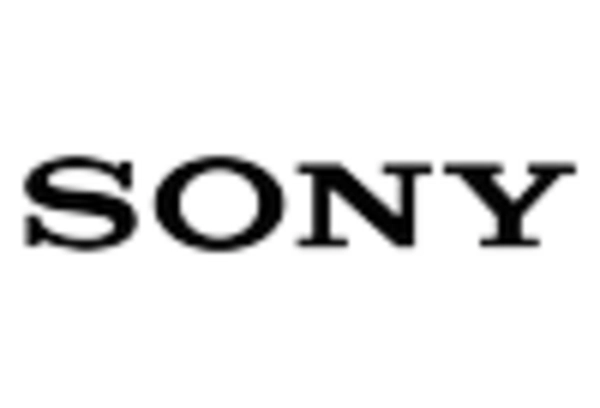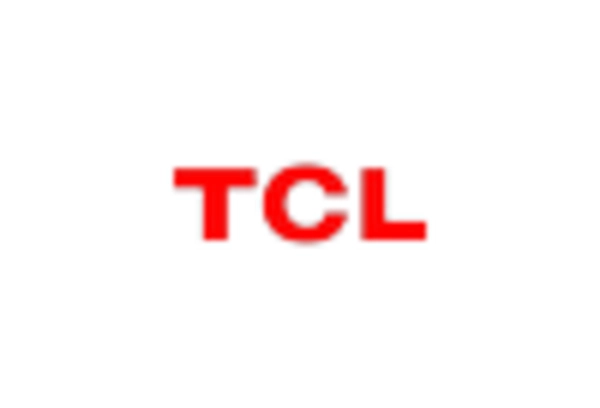Rising Disposable Incomes
The growth of disposable incomes among the Indian middle class is a significant factor influencing the smart tv market. As of November 2025, the average disposable income in urban areas has increased by approximately 15% over the past few years. This rise in income allows consumers to allocate more funds towards discretionary spending, including home entertainment systems. Smart TVs, with their advanced features and capabilities, are increasingly seen as essential household items. The willingness to invest in high-quality entertainment options reflects changing lifestyles and preferences. As more consumers prioritize home entertainment, the smart tv market is expected to expand, driven by the demand for premium viewing experiences that smart TVs provide.
Technological Advancements
Technological innovations play a pivotal role in shaping the smart tv market. The introduction of features such as 4K resolution, HDR, and AI-driven interfaces enhances the viewing experience, making Smart TVs more attractive to consumers. As of November 2025, manufacturers are increasingly focusing on integrating advanced technologies into their products, which could lead to a projected growth rate of around 20% in the smart tv market over the next few years. Additionally, the incorporation of voice recognition and smart home integration features is likely to appeal to tech-savvy consumers. These advancements not only improve user experience but also position smart TVs as central hubs for home entertainment, further driving market growth.
Competitive Pricing Strategies
The smart tv market is experiencing a shift due to competitive pricing strategies adopted by manufacturers. As of November 2025, several brands are offering Smart TVs at various price points, making them accessible to a broader audience. This competitive landscape encourages innovation and drives down prices, allowing consumers to purchase smart TVs without significant financial strain. The introduction of budget-friendly models with essential smart features has expanded the market reach, appealing to price-sensitive consumers. Consequently, this trend is likely to stimulate growth in the smart tv market, as more households consider investing in smart TVs as part of their home entertainment solutions.
Increasing Internet Penetration
The rapid expansion of internet connectivity in India is a crucial driver for the smart tv market. As of November 2025, internet penetration in India stands at approximately 70%, with a significant portion of the population accessing high-speed broadband. This increased connectivity facilitates seamless streaming of content, making Smart TVs more appealing to consumers. The availability of affordable data plans has further encouraged users to adopt smart TVs, as they can easily access various online platforms. Consequently, the smart tv market is likely to witness substantial growth, as more households invest in smart TVs to take advantage of the vast array of content available online. This trend indicates a shift in consumer behavior, where traditional viewing methods are being replaced by internet-based content consumption.
Shift Towards Home Entertainment
The evolving consumer preference towards home entertainment is a notable driver for the smart tv market. With more individuals opting to spend leisure time at home, the demand for high-quality entertainment systems has surged. As of November 2025, surveys indicate that approximately 60% of consumers prefer watching movies and shows at home rather than going out. This trend has led to an increased interest in Smart TVs, which offer access to a plethora of streaming services and applications. The convenience of having a comprehensive entertainment system at home is likely to propel the smart tv market forward, as consumers seek to enhance their viewing experiences without the need to leave their homes.

















Leave a Comment